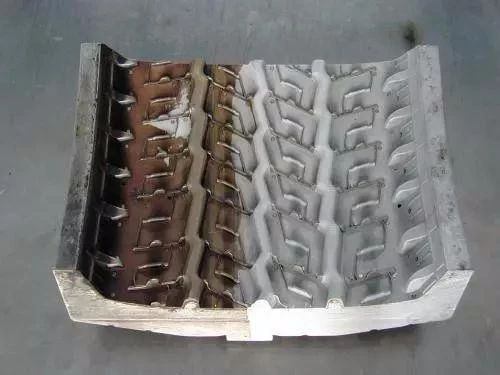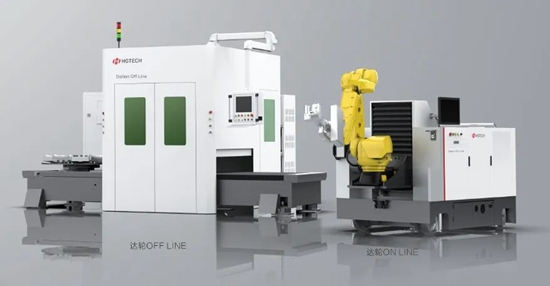Projects
Why are tire mold cleanings not thorough?Common Problems and Solutions in Tire Mold Cleaning
1、Incomplete Cleaning of the Mold
a. The mold temperature is too low or too high (85-120 degrees), causing insufficient reaction of the cleaning agent on the mold surface.
b. The mold deposits are too thick to be completely removed in one cleaning cycle.
c. Insufficient reaction time of the cleaning agent on the mold surface, failing to fully soften the free dirt particles, resulting in incomplete cleaning after flushing.
2. Rusting of the Mold After Cleaning
The reason is that unchromed molds, after cleaning, expose a fresh metal surface, which reacts with oxygen in the air, compounded by the effects of electrolytes in the cleaning agent.
3. Mold sticking phenomenon after cleaning
a. It may be due to insufficient smoothness in mold processing. After complete removal of dirt from the mold, small grooves interact with the rubber, creating an “anchoring” effect.
b. The metal surface, slightly activated after cleaning, behaves similar to a newly used mold, easily forming a slight bond with the rubber.

So, what are the main methods currently used for cleaning tire mold surfaces?
1. Mechanical Cleaning
Using physical abrasion with emery cloth and steel wire to clean tire molds. Some companies also employ sandblasting techniques, combining these methods to achieve good cleaning effects. Mechanical cleaning characterized by mature technology is widely applied in the tire industry, unaffected by environmental factors, and convenient to use. However, a drawback is that the cleaning process can damage the molds, reducing their lifespan. During sandblasting, sand may clog mold vents, necessitating additional cleaning after that. Overall, mechanical cleaning is time-consuming, costly, inefficient, environmentally damaged, and harmful to the health of operators.
2. Chemical Agent Cleaning
Chemical agent cleaning utilizes organic solvents and corrosive agent for cleaning. Its characteristics include easy operation and minimal damage to the mold. However, drawbacks include consumable costs, environmental pollution, time consumption, health risks, ineffectiveness in cleaning hard-to-reach corners, and incomplete removal of contaminants.
3. Laser Cleaning
Due to the irregular and complex patterns of mold textures,traditional cleaning methods often fail to clean thoroughly, which can affect tire quality. Laser cleaning equipment utilizes laser-generated optical energy to clean surfaces. It is easy to install, operate, and automate. It features automatic focusing, suitability for curved surfaces, high cleanliness, and the ability to remove resin, oil stains, dirt, rust, coatings, platings, and paint from object surfaces.
In the past decade, laser cleaning has rapidly developed and gradually replaced other cleaning methods in many fields.
HGLaser has developed tire molds online and offline laser cleaning intelligent equipment. They have overcome several core components and processes such as lasers, cleaning heads, and visual guidance technology. They have independently developed a library of laser cleaning expertise, enhancing automation and significantly reducing the labor intensity for workers during mold cleaning. The equipment can generate corresponding cleaning paths based on tire mold specifications, ensuring consistency in the cleaning process and improving cleaning quality.

Non-disassembly: Clean one pair of tire molds online in 20 minutes.
- Compatible with multiple specifications and complex scenarios
- Not afraid of high temperatures
- High precision and easy operation
- Fully automatic+Pollution-free
Tire Mold Offline Laser Cleaning Equipment
Automation, high precision, and high efficiency
- Highly automated
- Thorough cleaning
- Independently developed software system
- Dual workstations for universal use



































